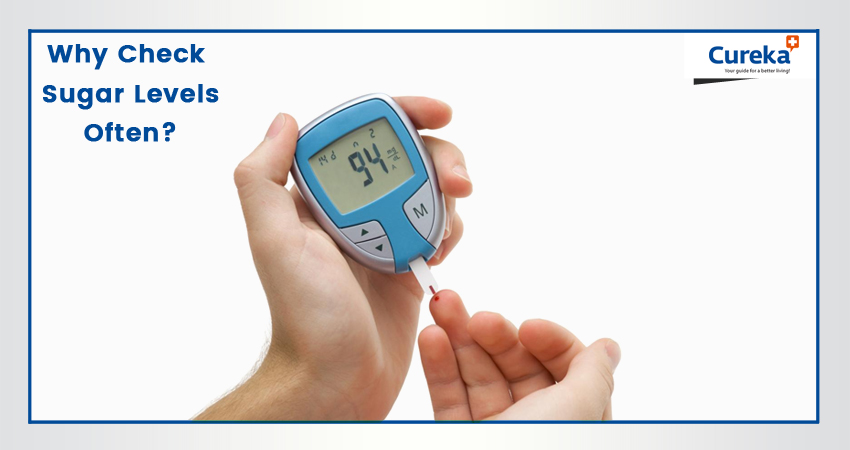Why Check Sugar Levels Often?
Check Blood Sugar Levels often to Manage Diabetes.
Blood sugar testing is a vital part of diabetes care. If you happen to have diabetes testing your blood sugar often may be needed. This is a critical tool for preventing complications of diabetes and keeping the symptoms under control. Blood sugar can be tested at home with an electronic meter and testing strip.
Self-testing blood sugar and monitoring the levels has essential reasons.
1. Understand how ably you are handling your overall blood sugar goals.
2. Be able to figure out how diet and exercise affect sugar levels.
3. Be able to understand how illness and other related factors affect blood sugar.
4. Make sure that the medications are working optimally and not allowing sugar levels to be too high or low.
5. Identify the situations and time of the day when sugar levels are at highest and least.
6. Ideally, the doctor, usually a specialist, would advise on how often to check for sugar levels. It would depend on the treatment plan being used by the doctor.
How Many Times Each Day Should it be Checked?
Type 1 diabetes – In the case of Type 1 diabetes, the doctor may recommend that sugar is tested up to 10 times daily. It may be needed to test sugar levels before and after meals, activity and also at night. It will also be required if a new medication is introduced which would impact blood sugar levels or functioning of diabetes medication.
Type 2 diabetes – In case your treatment requires administration of insulin then your doctor would ask you to test sugar a few times day. This is dependent on the amount of insulin you use. Insulin can cause a sudden fall in blood sugar levels, and monitoring is necessary.
What is the ideal sugar level?
For those who have diabetes, it must be between 80 – 120 mg/dl in fasting condition (after waking up or eight hours after any food). For those who are above 60 years of age, it is between 100 – 140 mg/dl.
After a meal, it should be within 180 mg/dl (measured precisely two hours after the meal).
How to Self Monitor Sugar Levels?
Blood sugar testing at home requires the use of a portable electronic device called glucometer. It reads the sugar level from a tiny drop of blood drawn from the fingertip. This drop of blood is placed on a test strip. The test strip is inserted inside the glucometer. A glucometer comes with a lancet for creating a tiny puncture. The meter displays the blood sugar level after a few seconds. It is also possible to draw blood from palm, but the reading will not be as accurate as blood from the fingertip.
It is necessary to keep a journal of the measurements along with date and time of day. Many devices allow the record to be stored and later downloaded to a computer.
Conclusion
Testing blood sugar as often as is required is very essential. Low sugar levels can lead to hypoglycemia and fainting. High sugar levels can lead to damage of internal organs and impair overall health. Self-management is an integral part of diabetes treatment. Regardless of how you manage your diabetes – through diet and exercise alone or in combination with oral medications or insulin – you can immediately know how your program works by regularly checking your blood sugar level.














